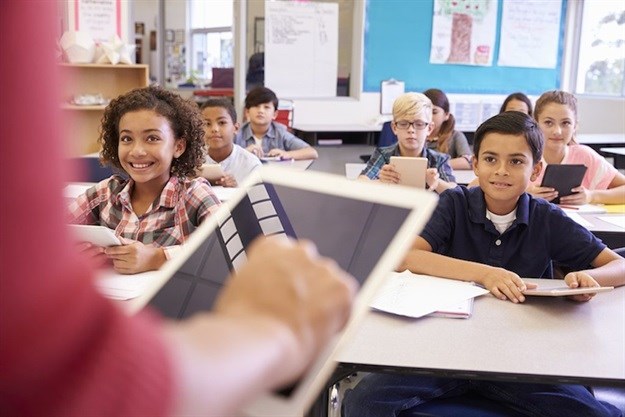
Top stories





HealthcareHIV funding still falls short of targets after pledges: what’s at stake
Melanie Bisnauth 4 hours

More news











Despite South Africa having one of the highest budget allocations for education in the world (around 20% of total government expenditure), the South African education system is still chronically over-burdened and under-resourced.
“All across the world, governments are finding that their education systems lack infrastructure and are not meeting the demands of these exponentially increasing populations,” says Alan Goldberg, director of education at Digicape, whose mandate is to assist institutions in offering learners a richer, more personalised learning experience through the use of Apple technology.
“Technology is being sought to expand the educational curricula at all levels of schooling, and service larger classrooms. However, without the guidance of a skilled educator, technology in itself is redundant. If an engaged teacher facilitates and guides the learning process, the full power of technology can be harnessed to truly transform the education experience.”
Goldberg refers to Dr Ruben Puentedura’s SAMR model, which is designed to help educators infuse technology into learning. ‘SAMR’ is an acronym of ‘Substitution’, ‘Augmentation’, ‘Modification’ and ‘Redefinition;’ four fundamental aspects of incorporating technology into education.
“The first two elements, ‘Substitution’ and ‘Augmentation’, focus on enhancing the learning process, while ‘Modification’ and ‘Redefinition’ are concerned with transformation. The model emphasises the need for a continuum of learning. By using technology, learning is no longer restricted to just the classroom – all locations become a space of learning, resulting in an immersive learning experience.
“If you set aside a host of other challenges for a moment, including the lack of amenities and misuse of resources, one of the core challenges identified is that many South African teachers do not have the basic pedagogic and content knowledge required to impart much-needed skills, due to a lack of investment in teacher training. This is where technology can bridge certain gaps.”
On a practical level, the concept of ‘connected classrooms’ would allow a privileged school to connect with one in a rural area, through an iPad, and share their learning experiences.
In addition, given South Africa’s history and socio-economic context, the disparity in aptitude among students is vast.
“Technology is a great equaliser, it allows the learning process to be tailored by the educator to accommodate each student’s academic strengths and weaknesses, interests and motivations, and pace of learning.”
Most importantly, technology provides children with greater agency, meaning the self-motivated students are able to process information for themselves and seek their own solutions to problems.
“It is essential that effective programmes are put in place that facilitate student access and support teacher training. If teachers lack confidence when using technology, this will lead to resistance in its adoption. Many organisations offer teacher training programmes, so that educators can feel more confident utilising new technology and guiding students in its use.
“In a nutshell, for the potential of technology in South Africa to be fully realised, the state and education system need to formally buy in to its potential and invest in teacher training programmes. Adequate funding for its adoption and advancement in schools – starting with those whose students are primarily from previously disadvantaged backgrounds – needs to be allocated. It also requires effective safeguarding of devices, particularly in communities prone to crime.
“We have a strong focus on education, as we believe that it holds the key to levelling the playing field for students from previously disadvantaged backgrounds and across the full socio-economic spectrum, provided there is an equipped educator leading the learning process,” concludes Goldberg.